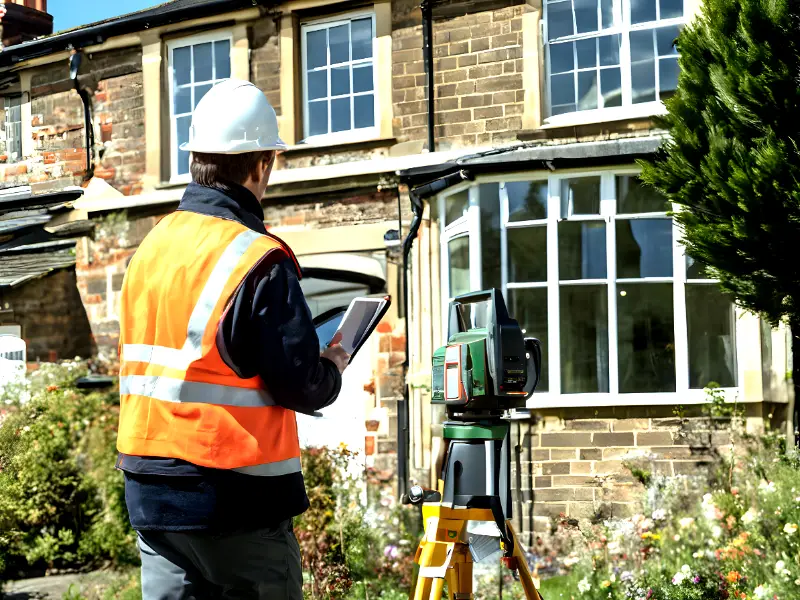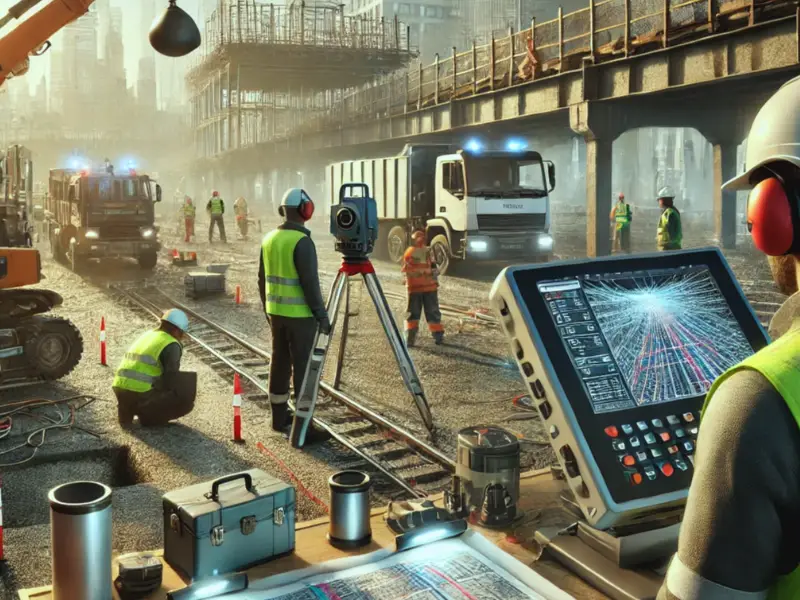
There are numerous choices and expenses to consider when purchasing real estate. Whether it’s worthwhile to pay for a home survey is one subject that comes up regularly. By identifying problems with the property that might not be apparent during a viewing, house surveys might help you prevent unpleasant surprises.
However, some purchasers may find the price off-putting. Does a home survey make sense, then? We’ll go over what house surveys are, their advantages, and how they can end up saving you money in the long run in this post.
What is a House Survey?
A house survey is an inspection carried out by a qualified surveyor to assess the condition of a property. There are several types of surveys, ranging from basic assessments to detailed investigations. The goal of a survey is to identify any defects or potential problems with the property that could affect its value, safety, or future repair costs.
Surveyors will check for structural damage, dampness, subsidence, and problems with the roof or foundations. They may also highlight less serious concerns, such as cosmetic defects or outdated plumbing or electrical systems. Depending on the type of survey, the surveyor might recommend further investigations if they suspect major issues.
Read More: How Much Does a Surveyor Cost in UK?
Types of House Surveys

The RICS Home Survey – Level 1
This survey, which is the most basic, is typically advised for typical properties, including conventional houses, apartments, and bungalows. You should be confident that the property is in good shape and that no odd building materials or design elements are being used.
What’s included:
- A low-level visual inspection (less thorough than those carried out for Level 2 and Level 3 surveys)
- A report that uses a traffic light system to determine whether any issues found are serious (red), a cause for concern (orange), or ok (green)
- A summary of risks to the building, occupants, and grounds
- An assessment of the relative importance of the defects and problems that have been found
Not included:
- Tests to confirm the quality of the building fabric or services
- Advice on what repairs are needed
- Guidance on the required ongoing maintenance
- A monetary valuation of the property
The RICS Home Survey – Level 2 (survey only)
Although this survey provides more thorough information than its Level 1 equivalent, it should still only be applied to typical property types that appear to be in acceptable condition.
What’s included:
- A more thorough visual inspection, which will include concealed areas, such as roof spaces and basements
- A report that uses a traffic light system to determine whether any issues found are serious (red), a cause for concern (orange), or ok (green)
- A summary of risks to the building, occupants, and grounds
- An assessment of the relative importance of the defects and problems that have been found
- A Level 2 survey report will include the same information as a Level 1 survey but with more specifics. These can include prior boundary conflicts, damp assessment, and broadband speed.
Not included
- Tests to confirm the quality of the building fabric or services
- Advice on what repairs are needed
- Guidance on the required ongoing maintenance
- A monetary valuation of the property
The RICS Home Survey – Level 2 (survey and valuation)
As the name implies, all of the items mentioned in the Level 2 survey above will be included in this one, along with details about the property’s worth. If you want to know how the value of your purchase might fluctuate over time or if you just want to be sure you’re paying a fair price, this can be a useful add-on.
The valuation included in this package will typically cover:
- A professional opinion on the current market value of the property
- How many uncovered problems may affect the property’s value in the future
- An insurance reinstatement figure
The RICS Home Survey – Level 3
A Level 3 survey is the most extensive variety and therefore will be the most expensive to undertake.
Once referred to as a full or structural survey, they’re typically recommended for older properties or more unusual buildings, such as those with a listed status. You might also consider this option if you plan on undertaking any large-scale alterations, as the report included here will include details on recommended repairs and maintenance concerns.
What’s included
- An extensive visual inspection of the building, services, and grounds that will also include a more thorough report on concealed areas (basement and loft) than the one offered for Level 2
- Your surveyor will check that your services are in normal operation if it is safe to do so and the occupier gives permission
*Please note: this is not a full test but will try to confirm basic functionality.
The report provided will offer the same traffic light detailing as the other levels. On top of this, your final assessment will also include:
- Risks that your surveyor beliefs may be present in areas of the property that are inaccessible
- An assessment of how the faults found may have been caused
- An outline of how issues may be fixed, as well as what the consequences could be if they go unattended
- Your surveyor should also give some recommendations on what repairs you should focus on first and the timescales involved.
- Some surveyors may also provide cost estimates for the work required, though this service should be agreed upon in advance.
Not included: Level 3 surveyors do not automatically include a valuation. You’ll likely need to pay for this as an additional service.
House Survey Statistics

The Home Owners Alliance offers the following crucial data to highlight the significance of surveys:
- 20% of homebuyers who chose not to commission a survey had to pay for unforeseen repairs.
- For those without a survey, the average repair bill came to £5,750.
- According to 17% of survey-skipping homebuyers, the repairs were significant and affected how much they enjoyed the house.
These numbers demonstrate that even though a survey may appear expensive, it can ultimately save you money by averting unforeseen repair expenses.
Hidden Issues a Survey Can Uncover
- Damp and Mould: This is one of the most common issues found in homes and while some cases of dampness can be easily fixed, severe dampness may indicate structural problems.
- Subsidence: Subsidence occurs when the ground beneath a property shifts, causing the building to move. This can lead to severe structural damage if left untreated.
- Roofing Issues: A survey can uncover issues with the roof, such as missing or broken tiles, which may lead to leaks and water damage if not addressed.
- Electrical Safety: Older properties may have outdated electrical systems that do not meet modern safety standards. Rewiring can be costly, but necessary for safety.
- Structural Integrity: In older properties, the building’s overall structure may be compromised. This could include cracks in the walls or foundations, which could indicate serious underlying problems.




